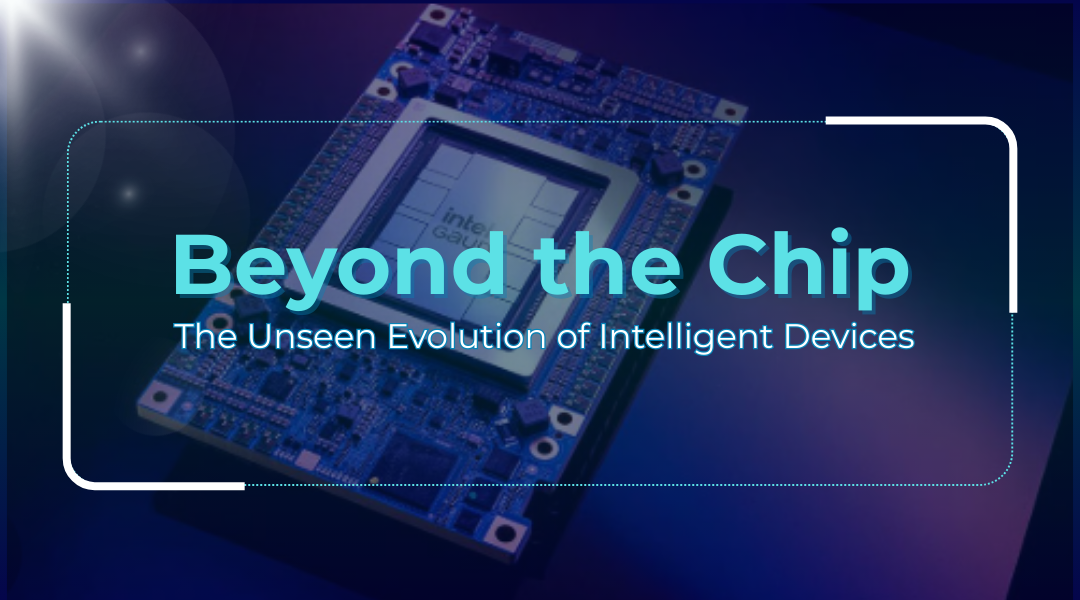We stand at a curious juncture. The devices around us are gaining a semblance of thought, making decisions not in a faraway data center, but right here in our hands, on our wrists, and in our homes. But this is merely the opening act. The true transformation of edge AI won’t be about making things incrementally faster or smaller; it will be about fundamentally reimagining the relationship between intelligence, the physical world, and ourselves. The future is whispering of devices that don’t just compute but comprehend, that collaborate instead of just connect, and that protect privacy not by policy, but by physics.
The Silent Shift: From Processors to Partners
The next wave won’t be led by brute processing power. It will be defined by a new set of principles:
1. Invisible Efficiency: The Rise of Neuromorphic Design
The von Neumann architecture—the classic computer model we’ve used for decades—is hitting a wall for continuous, ambient intelligence. The future belongs to neuromorphic chips, which are less like traditional processors and more like synthetic brains.
Imagine a security camera that doesn’t stream endless video. Instead, its neuromorphic vision chip remains dormant, consuming barely more power than a watch battery, until its event-based sensor detects the specific, sparse data of a human shape crossing a boundary. Only then does it “wake up” its higher reasoning functions. This isn’t just low-power; it’s a different paradigm of computation, inspired by biology, where energy is spent only on what is meaningful.
2. The Intimate Interface: AI Meets Biology
The most profound edge won’t be in our homes, but on and inside our bodies. We’re moving towards a seamless integration where AI becomes a guardian of our personal biology.
- Next-gen wearables won’t just count steps. Think of a skin patch with a microscopic lab-on-a-chip that performs continuous, non-invasive blood analysis, using a tiny, onboard AI model to track glucose, hormones, and electrolytes in real time, alerting you to imbalances before you feel them.
- Smart prosthetics will evolve from pre-programmed movements to adaptive limbs. Using AI at the edge, a prosthetic hand could learn the specific pressure and grip patterns needed to hold a paper cup without crushing it, based on real-time sensor feedback from its own fingertips, with zero latency.
3. The Collaborative Swarm: Collective Intelligence Emerges
The myth of the lone, intelligent device will give way to the power of the collective. Individual edge devices will become nodes in a distributed sensory network, capable of swarm intelligence.
Consider a team of drones fighting a forest fire. No single drone has a complete view. But each one, using its edge AI to map fire lines and sense wind patterns, broadcasts its findings to others via low-power mesh networks. Collectively, they self-organize, adapting their flight paths in real time to create a dynamic firebreak and guide ground crews, all without a central cloud controller. The intelligence emerges from their collaboration.
The Privacy Paradigm: Trust Built on Architecture, Not Promises
Future edge systems will make privacy a default architectural feature, not a software setting.
- Fully Homomorphic Encryption (FHE) will allow a medical implant to analyze your encrypted health data without ever decrypting it. The device can spot a dangerous anomaly without being able to “see” the underlying sensitive information, making a data breach fundamentally meaningless.
- Zero-Knowledge Proofs will enable your car to prove to a smart parking garage that you have a valid monthly subscription without revealing your identity, account number, or any other personal data. It proves a statement is true without revealing why it’s true.
In this future, your data doesn’t need to be trusted to a company’s servers because it never leaves your sovereign control.
The Energy Harvesters: A Post-Battery World
The quest for ever-smaller batteries will be supplanted by devices that harvest energy from their environment. We’ll see:
- Factory sensors powered by the vibrations of the machinery they monitor.
- Agricultural sensors in remote fields powered by subtle temperature differences between day and night.
- Retail shelf tags that update prices by scavenging energy from the overhead LED lights.
These devices will slip into the background of our world, maintenance-free and sustainable, their intelligence perpetually fueled by the ambient energy around them.
The New Developer Ethos: Constraint as a Catalyst
This future demands a new kind of creator. The developer of tomorrow is part systems architect, part ethicist, and part poet of efficiency. Their canvas is not infinite cloud resources but the severe and beautiful constraints of the physical world.
The mindset shifts from “what can we build?” to “what is the most elegant, resilient, and private way to solve this with almost nothing?” They will design systems that are:
- Graceful: They degrade functionality without total failure when pushed to their limits.
- Explainable: They can articulate the “why” behind a decision locally, without a cloud backchannel.
- Unobtrusive: Their intelligence is felt through seamless operation, not constant notification.
Conclusion: Weaving Intelligence into the Fabric of Reality
The endgame of edge AI is not a world cluttered with smarter gadgets. It is the emergence of a ambient intelligence—a seamless layer of cognition woven into the very fabric of our environment. This intelligence will be as fundamental and invisible as electricity is today.
It’s the quiet hum of a building that manages its own energy and climate, a transportation grid that flows with predictive ease, and a personal health environment that understands and responds to our needs before we consciously articulate them. This future moves beyond the concept of a “device” altogether. The intelligence won’t be in a thing you hold; it will be in the relationship between things—the silent, collaborative, and context-aware dance of a million tiny minds embedded in the world.
